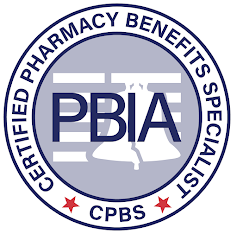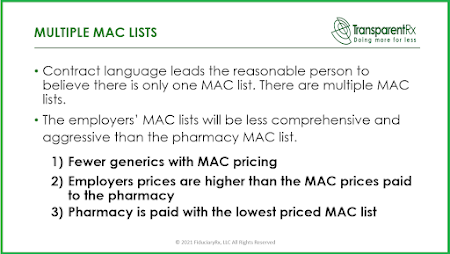Tip of the Week: PBMs that make money through hidden cash flows do so at the expense of client savings and health of members
The PBM works with the client to decide the pharmacy benefit that it will offer, including the drugs that will be covered, the beneficiary’s cost-sharing requirements, and the pharmacy network. The client then retains the PBM to administer the pharmacy benefit for its members or employees. How much cash the PBM actually generates for itself, on a per client basis, is information that is overlooked in far too many PBM contracts.
Is it unreasonable to know exactly how much revenue your PBM is keeping for itself on the services it provides to your organization? Traditional and pass-through pharmacy benefit managers alike will bark at this notion. The reality is clear: non-fiduciary pharmacy benefit managers intentionally make it difficult to ascertain their management fee. They know what you’ll learn will not allow them to maintain the status quo.
RETAIL COST COMPONENTS
Administrative Fees
- These are the fees PBMs charge for claims adjudication (processing). They are often artificially low, from $0.00 to $1.50 per claim, but later augmented with cash flows from hidden sources. If you are not paying at least $5.00 – $10.00 per claim, you can be certain that the PBM is making up the difference elsewhere. This practice is frequently referred to as ballooning.
- Administrative fees associated with claims adjudication are different from the administrative fees paid by pharmaceutical manufacturers to PBMs. More on that in the rebate section of this white paper.
Dispensing Fees
The professional dispensing fee, which compensates for costs beyond the ingredient cost of a covered outpatient drug, is gained at the point of sale or service each time a covered outpatient drug is dispensed. The Centers for Medicare & Medicaid Services (CMS) states that it only includes pharmacy costs related to ensuring that appropriate covered outpatient drug possession is transferred to a beneficiary. According to the CMS, reasonable expenses related to a pharmacist’s time that fall under the category of pharmacy costs include, but are not limited to:
- Looking up information about a patient’s coverage on the computer
- Carrying out drug use reviews and preferred drug list review activities
- Measuring or mixing the covered outpatient drug
- Beneficiary counseling
- Physically giving the beneficiary their completed prescription
- Special packaging
- Overhead associated with facility and equipment maintenance necessary to the pharmacy’s operation
The CMS also adds that administrative costs incurred by operating covered outpatient drug benefits—including systems costs for interfacing with pharmacies—are not a part of the professional dispensing fee. This detailed list of pharmacist activities included in the professional dispensing fee is intended to reflect the value of practitioner work.
Where an acquisition cost–based system has been implemented in PBM retail pharmacy networks, the dispensing fees have been in the $9 to $15 range per prescription. Like administrative fees, dispensing fees can be artificially low. This leads to the PBM making up for the lost revenue somewhere else.
 |
| Spread Pricing – Hidden Cash Flow |








